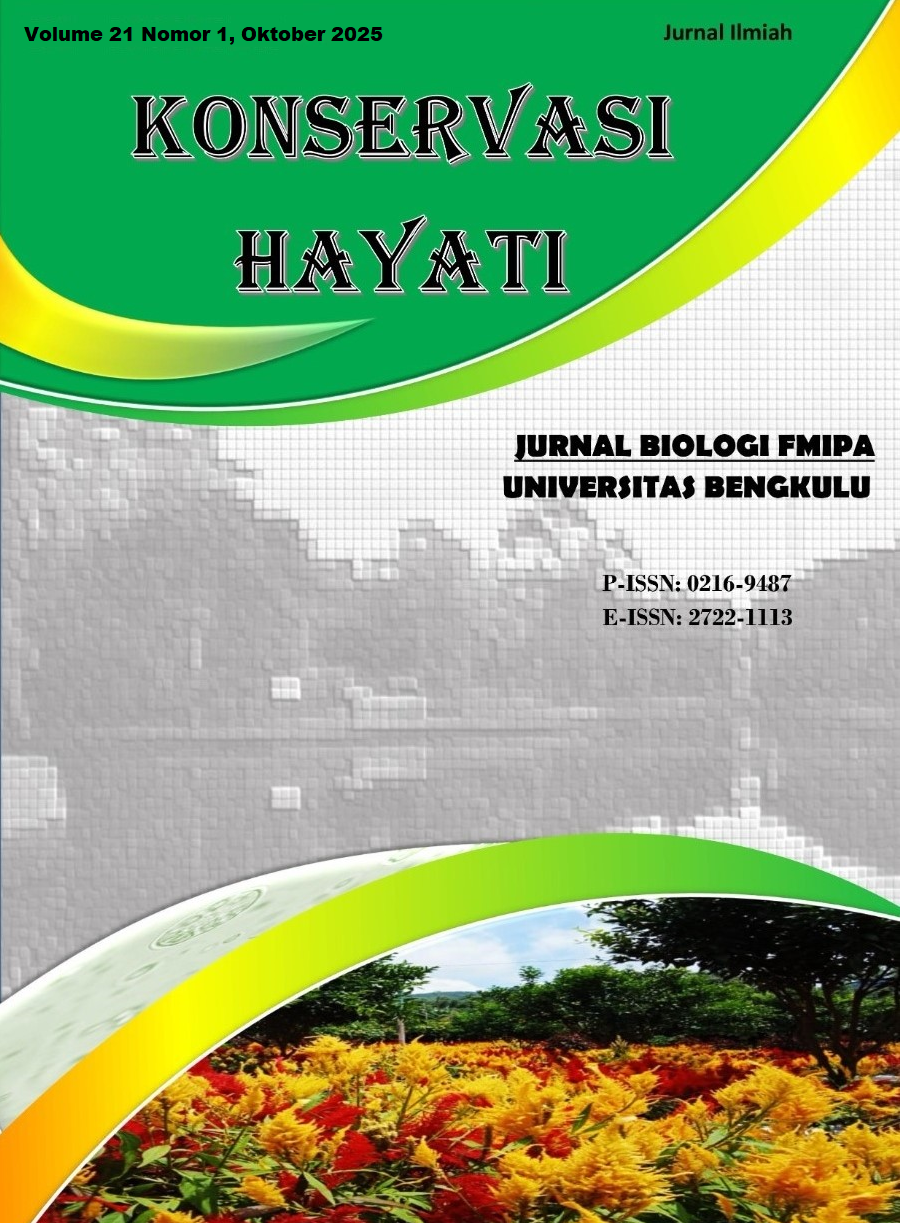Isi Artikel Utama
Abstrak
Household organic waste generated daily holds potential for conversion into bioenergy through biodrying technology. Biodrying is a biological drying process that relies on microbial activity to reduce the moisture content in organic waste, producing solid fuel. This study aimed to formulate a microbial consortium for biodrying applications and to compare the effectiveness of solid (talc-based) and liquid (molasses-based) carriers on biodrying performance and inoculant stability. The consortium comprised Lysinibacillus halotolerans, Bacillus soronensis, Lactobacillus rhamnosus, Pichia manshurica, and phosphate-solubilizing bacteria. Isolate rejuvenation was performed using selective culturing followed by characterization. Microbial formulations were developed in both solid and liquid forms and applied to organic waste. Key parameters observed included moisture content, temperature, pH, and inoculant viability over a three-month storage period. The results showed that both talc and molasses carriers were more effective than commercial controls, as indicated by higher temperatures (44.1°C and 43.66°C), lower moisture content (44.5% and 45.25%), and favorable pH values (5.8 and 6.35), which supported mesophilic and thermophilic microbial activity during the biodrying process. Peak microbial activity occurred on day four, predominantly driven by Bacillus species during the thermophilic phase. Inoculant stability was also higher in the talc-based formulation, potentially due to its magnesium and silicon content, which contributed to maintaining microbial viability during storage.
Rincian Artikel
Hak Cipta (c) 2025 Sukarya Zaenal Arifin, Nisa Rachmania Mubarik, Iman Rusmana

Artikel ini berlisensiCreative Commons Attribution-ShareAlike 4.0 International License.
Authors who publish in this journal agree with the following terms:
- Authors retain copyright and grant the journal right of first publication with the work simultaneously licensed under a Creative Commons Attribution-ShareAlike 4.0 International License that allows others to share the work with an acknowledgement of the work's authorship and initial publication in this journal.
- Authors are able to enter into separate, additional contractual arrangements for the non-exclusive distribution of the journal's published version of the work (e.g., post it to an institutional repository or publish it in a book), with an acknowledgement of its initial publication in this journal.
- Authors are permitted and encouraged to post their work online (e.g., in institutional repositories or on their website) prior to and during the submission process, as it can lead to productive exchanges, as well as earlier and greater citation of published work (See The Effect of Open Access).
- This work is licensed under a Creative Commons Attribution-ShareAlike 4.0 International License.
